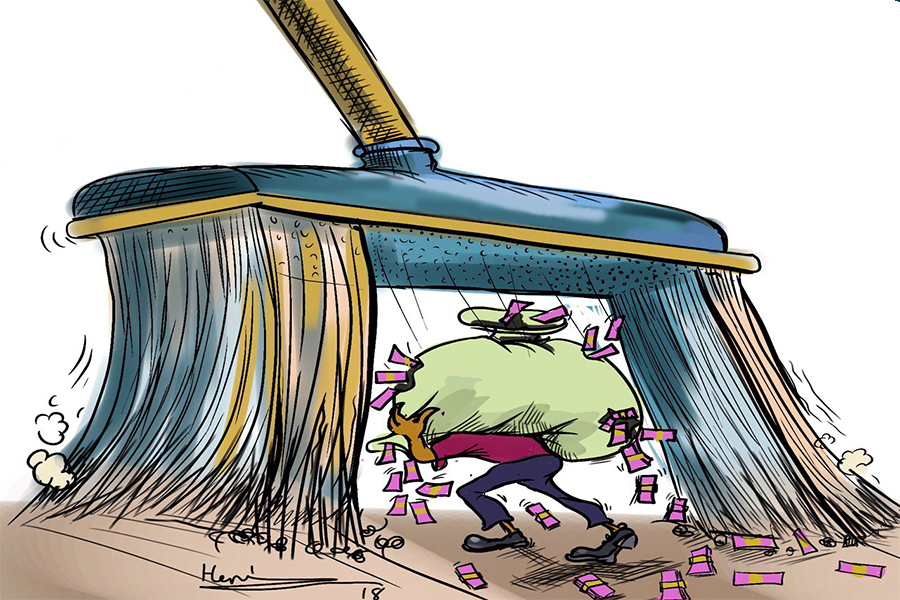
Photo Gallery | 180286 Views | May 06,2019
Aug 9 , 2025. By YITBAREK GETACHEW ( FORTUNE STAFF WRITER )
Federal agriculture authorities have unveiled their most ambitious horticulture drive yet, pledging to invest 24.5 billion dollars over the next seven years in a bid to transform a largely domestic and smallholder-dominated industry into a globally competitive export sector.
The National Horticulture Strategy, launched by the Ministry of Agriculture and introduced by Girma Amente (PhD), its former minister and now African Union ambassador to Geneva, aspires to lift horticulture’s GDP share from 4.5pc to 12pc, quadruple annual foreign exchange earnings to 3.3 billion dollars, and create two million permanent jobs by 2033. It sets out eight policy pillars from research, extension services, institutional capacity, and a new production map that identifies eight horticultural corridors, 200 clusters, and 10 specialised parks.
Officials cast the strategy as both a course correction and a scaling-up. State Minister for Agriculture Meles Mekonen (PhD) told regional agriculture bureau heads and investors on July 21 at the Skylight Hotel that the plan would “change everything from the bottom up.” It is designed to substitute imports with quality domestic output and align with green economy targets by reducing carbon emissions.
The redesign follows an admission that the previous strategy did not deliver. According to Mekonnen Solomon, the Ministry's horticulture export coordinator, the old plan was scrapped because it failed to support commercialisation and cluster growth.
“The new plan is grounded in current realities,” he told Fortune. “It's well-studied and based on the data, not on theory.”
Mekonnen believes farmers should have easier access to credit than in the past, even as he cautions that securing funds may still be cumbersome, with disbursements being processed manually.
The government, development partners and the private sector will share financing. Private investors are expected to develop over 48,000hct, up from about 14,000hct currently under cultivation. Smallholder farmers, particularly those producing mangoes and avocados, are to receive financing and extension support to increase yields. The Ministry's benchmarks claim labour intensity could be high in some crops, with tomatoes and onions expected to employ up to 35 people per hectare.
"The plan will change everything from the bottom up." Meles Mekonen (PhD) State Minister for Agriculture
Data from the Ministry and Customs Commission show that in 2022/23, the domestic market absorbed 98.37pc of vegetable output and 99.5pc of fruit production. Only 1.63pc of vegetables and 0.5pc of fruits were exported, and more than 96pc of those exports went to neighbouring Djibouti and Somalia. To change that balance, officials and industry players converge on the same list of bottlenecks, including land, logistics, water, quality, cold chains and market access.
Producers say the new approach could unlock constrained capacity if it is executed. For Tewodros Zewdu, president of the Ethiopian Horticulture Producers & Exporters Association, the decision to make more land available to private investors marks a break with the past. Access to suitable land has been one of the industry’s tightest constraints. While he sees improvements in logistics, water, and production quality, he argued that sustained implementation will ultimately determine the outcomes.
“The past system had no enabling environment, especially for vegetables and fruits,” Tewodros told Fortune. “The strategy has it; now, it’s about implementation.”
According to Tewodros, broader private participation can increase both household consumption and export earnings, provided investors receive timely access to land and infrastructure, which could also enhance government revenue. He called for a clear policy framework for labour and property management, warning that without it, potential gains could be lost.
“If we get this right,” he said, “we can get billions of dollars, not millions, in a year.”
To reach that scale, he urged policymakers to prioritise agro-logistics and nationwide infrastructure upgrades to move fresh produce faster.
The stakes are visible on farms such as that of Alemu Aboye in Arbaminch, who grows bananas, avocados, mangoes and occasionally onions. Most of his vegetables feed his household. However, fruits are sold when he can find a buyer. Inconsistent yields, especially from his mango trees, often leave him with fruit he cannot sell.
“The tree bears much fruit, but it's disease-ridden,” Alemu told Fortune.
For him, raising output is less about planting more trees than managing existing orchards effectively, using modern seeds and expert guidance to combat pests and disease.
“We planted fruit on our land," he said, calling for stronger market links, advisory support and logistics. "We must get proper value for that. We need someone to track the cause, not simply say plant trees.”
Officials acknowledge the fragility of the last mile. According to the State Minister, while horticulture yields are high, post-harvest losses are a pressing problem. Limited packaging options, pest and disease outbreaks, inadequate cold storage and weak logistics eat into profits and blunt export potential. He called for infrastructure investment, broader participation, and the inclusion of youth and women, alongside technology transfer systems, out-grower schemes, and more resilient production models.
“Our vision is to build a globally competitive sub-sector and be a leading producer and exporter of horticulture,” Meles said.
Researchers point to agronomy, inputs and market design as levers that matter as much as money.
Sabura Shara (PhD), a horticulture researcher at Arbaminch University with over 15 years of teaching experience, emphasised agroecology, matching crops to the right environments.
“It's necessary to plant the appropriate vegetable in the appropriate place,” he said, urging inspections and modern seedlings for crops such as mangoes and bananas.
Sabura warned that outcomes depend on execution, not only plans, and pressed for investment in disease-resistant seeds, refrigerated transport and a balance between domestic and export markets. He criticised reliance on imported seeds for staples like onions, tomatoes and peppers, arguing for the development of local seeds. Stronger market linkages, “the heart of horticulture”, are essential, he said, or products risk going to waste.
The researcher called for coordinated interventions against mango pests, along with tighter quality control and long-term seed preservation. For perishable goods, he likened horticulture logistics to the meat industry, where speed and careful handling are paramount.
“Without these measures,” Sabura cautioned, “the country’s ambitions for the sector could wither before they bear fruit.”
PUBLISHED ON
Aug 09,2025 [ VOL
26 , NO
1319]

Photo Gallery | 180286 Views | May 06,2019

Photo Gallery | 170483 Views | Apr 26,2019

Photo Gallery | 161512 Views | Oct 06,2021

My Opinion | 137269 Views | Aug 14,2021

Nov 1 , 2025
The National Bank of Ethiopia (NBE) issued a statement two weeks ago that appeared to...

Oct 25 , 2025
The regulatory machinery is on overdrive. In only two years, no fewer than 35 new pro...

Oct 18 , 2025
The political establishment, notably the ruling party and its top brass, has become p...

Oct 11 , 2025
Ladislas Farago, a roving Associated Press (AP) correspondent, arrived in Ethiopia in...